Whilst not on everyone’s shopping list, an encounter with the large tube-web spider Segestria florentina is on offer at a Sainsbury’s in West Oxfordshire.
Hot on the heels of the false widow spider, Steatoda nobilis, the range of which has expanded considerably over the last twenty years, another non-native species, the large tube-web spider* Segestria florentina is also on the rise.
There is some similarity in the changing distribution of these two species. Although both have been known to occur in Great Britain for many years, they were largely restricted to ports and market towns in southern England. A constant trickle of introductions via busy shipping and trading routes, together with their synanthropic habits and the milder coastal climate, allowed these species to become established. Recently though the warming climate is seeing their range expanding across the country.
The reason I link these two species in my mind is that, when I first came across S. florentina, twenty years ago, I was working in an old building in South Devon where both species resided. We had a very healthy population of S. nobilis living in the sash windows inside the building, and outside the building, cracks in the old brickwork were occupied by S. florentina. This was before all the lurid headlines regarding S. nobilis appeared frequently in the news. We even had a small delegation come up from the main Plymouth University campus to ‘admire’ our false widows. Now of course they have spread to all corners of southern and central England with a trail of bad publicity in their wake. Fortunately though, S. florentina has not attracted the same negative attention as S. nobilis**.
I hope this continues because S. florentina is a handsome and impressive spider. For starters, if you stare into the darkness of its lair, you might first notice a glint of metallic green. This is actually the reflection from its jaws or ‘chelicerae’. The body of the spider is dark and unexceptionally marked but for some reason its jaws are shiny and green – it’s specific name florentina is thought to be derived from the term ‘florentine’ which in French cuisine describes dishes incorporating green spinach. The spider is also large and robust and perfectly adapted for a life which is spent mostly in its tube web. Both the abdomen and cephalothorax are elongated and the first three pairs of legs are angled forwards to better enable it to very quickly exit its tube and grab passing prey. The rear legs provide the means to cling onto its web and retreat back into its tube, hopefully with a meal in tow.
Although you will rarely see these spiders active during the day, their webs are very distinctive – which is how I came to notice them at our local Sainsbury’s. Around the entrance to the store are a number of wooden pillars which overtime have developed some large cracks. As I was diving in for midweek supplies I first noticed one large tube web on a pillar near the entrance. Obviously the store is a busy place and rather than look a bit weird inspecting the store front and taking photos, I opted to have a better look on Sunday before opening. On returning I inspected the couple of dozen pillars around the store and found Segestria webs on about a third of them.
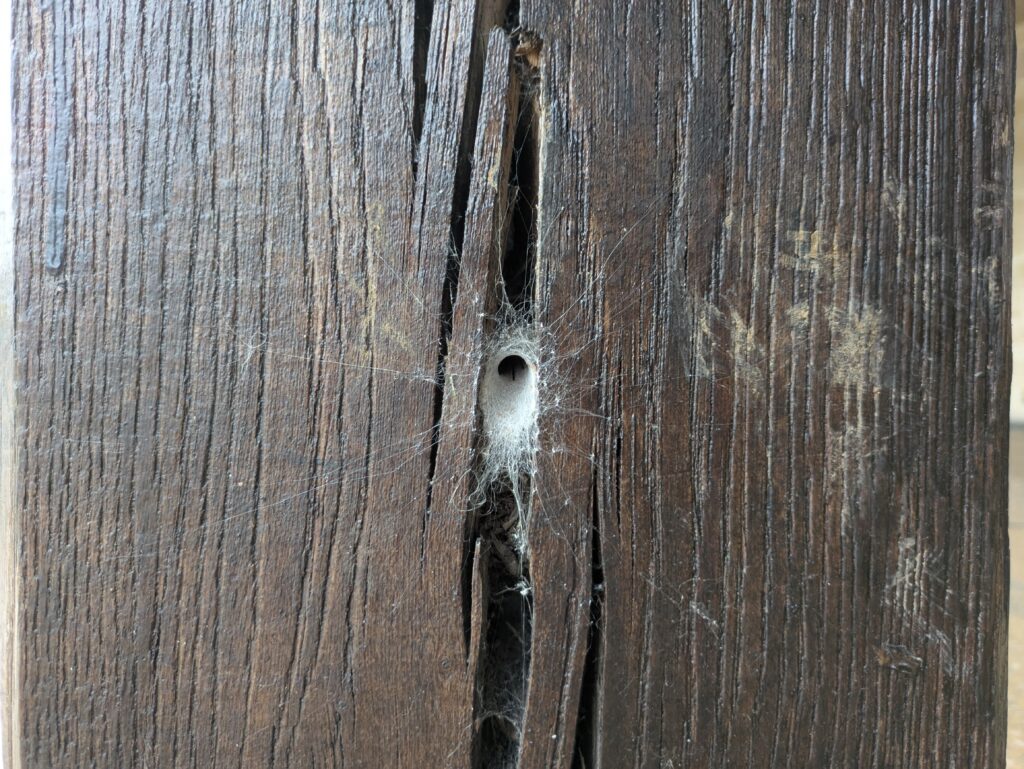
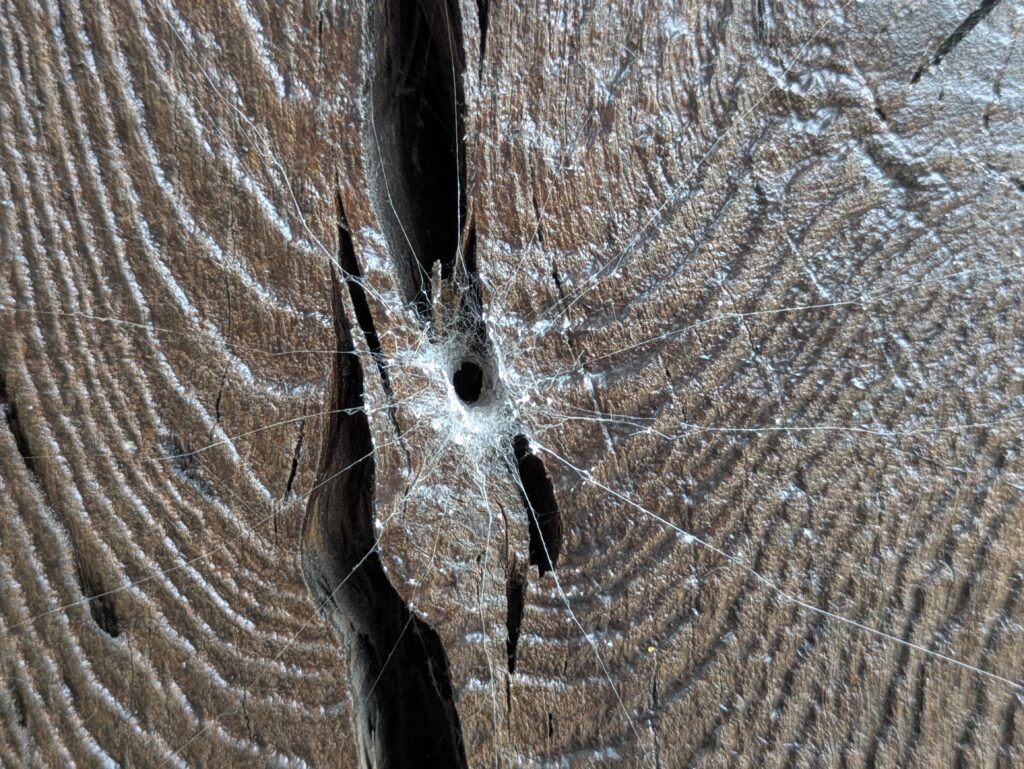
From the photos above you can see the tube retreat is large and well-formed, but the giveaway is the radiating ‘spokes’ of silk that act like tripwires, signalling to the spider hidden inside that a potential meal is within striking distance. There are other spiders which make their homes in tight spaces and I found an example on another pillar. The web below is from a lace web spider, most likely Amaurobius similis, or maybe Amaurobius fenestralis, which are both common spiders around any houses and built structures in general. You can immediately see how these spiders lend themselves to their name, producing an intricate lacework of silk around some rather untidy entrance holes; these webs are obviously quite distinct from the webs of S. florentina. We also have a couple of other species of tube-web spider in Great Britain, the distinctively marked snake-back spider, S. senoculata and the rare and coastal S. bavarica. Both these species make webs similar to S. florentina, and although, S. senoculata in particular, is common and can be found in similar situations, both spiders are much smaller with correspondingly smaller webs.
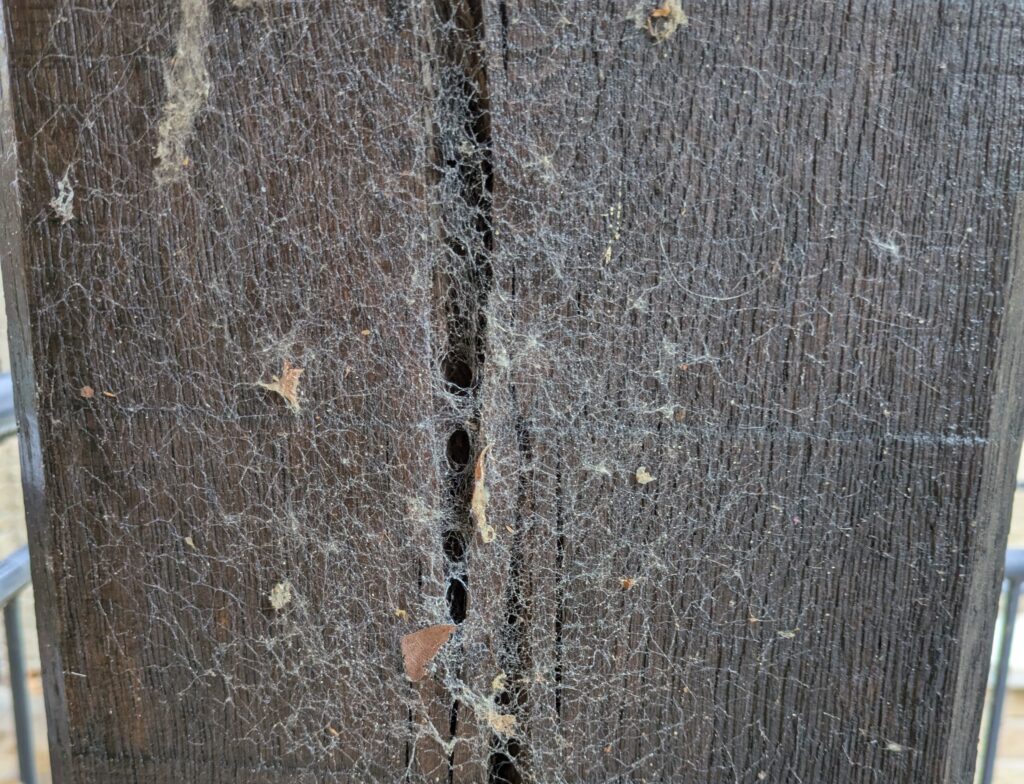
So how do we see the spider? Well, as mentioned they are rarely observed during the day (you might just notice the end of a leg in the photo above), and even at night, although they do often sit close to the tube opening, legs unnervingly spilling from the entrance hole, you might not see the whole spider. However you can entice them out with a couple of tricks. One is to use a tuning fork. Now, I did this many years ago and honestly I can’t ever remember owning a tuning fork. I think what I used instead was a stout pair of tweezers which vibrate like a tuning fork, it you strike them. Placing these against one of the radiating strands should mimic the movement of a passing insect and hopefully the spider will emerge. But beware, if you’re of a nervous disposition like myself, it can be a bit of a shock to see an eruption of body and legs launch itself out of the hole and jump on your tuning fork or tweezers. Whatever you used, you’ll certainly be glad it wasn’t your finger! If you want to go high-tech, apparently an ultrasonic toothbrush is quite effective too. Very occasionally it has been known for people to get bitten when perhaps an unwary hand has inadvertently brushed against its web. Its bite isn’t dangerous though and no lasting ill effects have ever been reported.
I’ll add a few more photos and some from Devon a long time ago and you can see how good (actually terrible) we were at photographing the spider.
There is an excellent BBC Radio 4 piece about S. florentina inhabiting the walls of Exeter Cathedral featuring the fascinating Pete Smithers. You can check it out here.
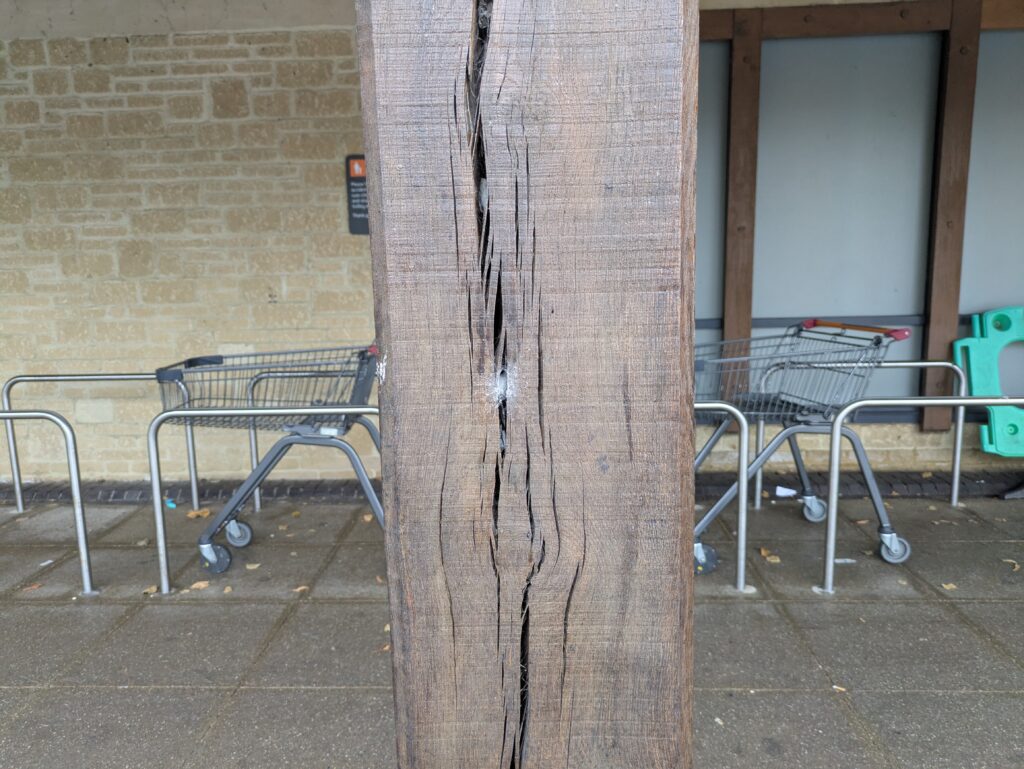
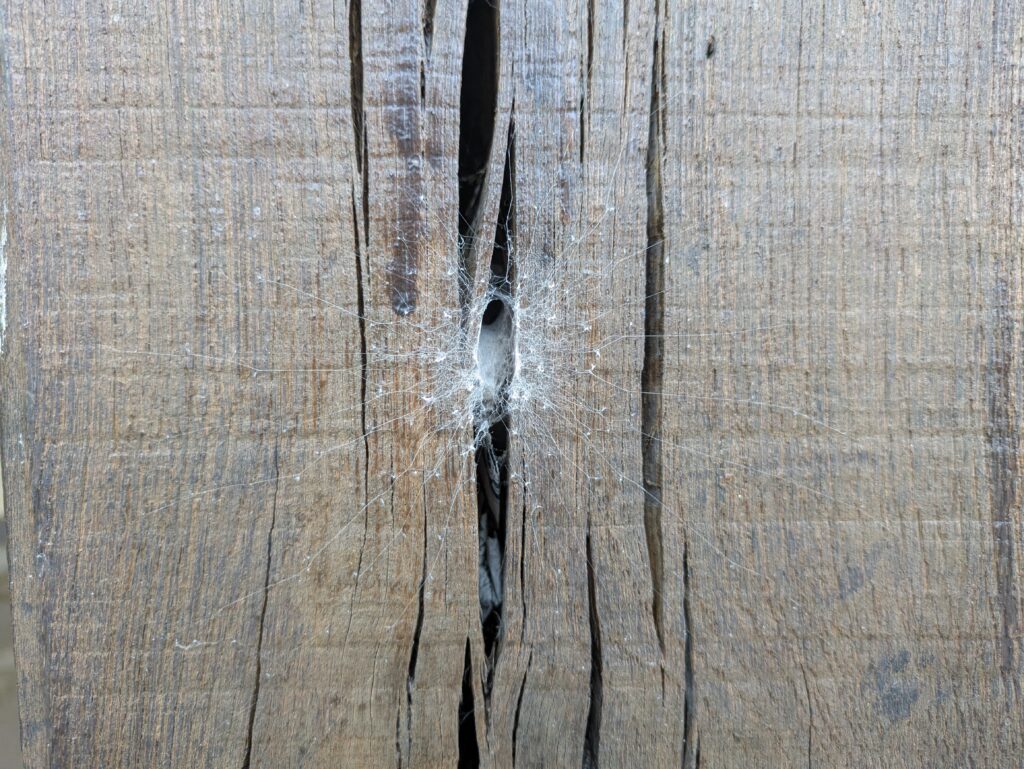
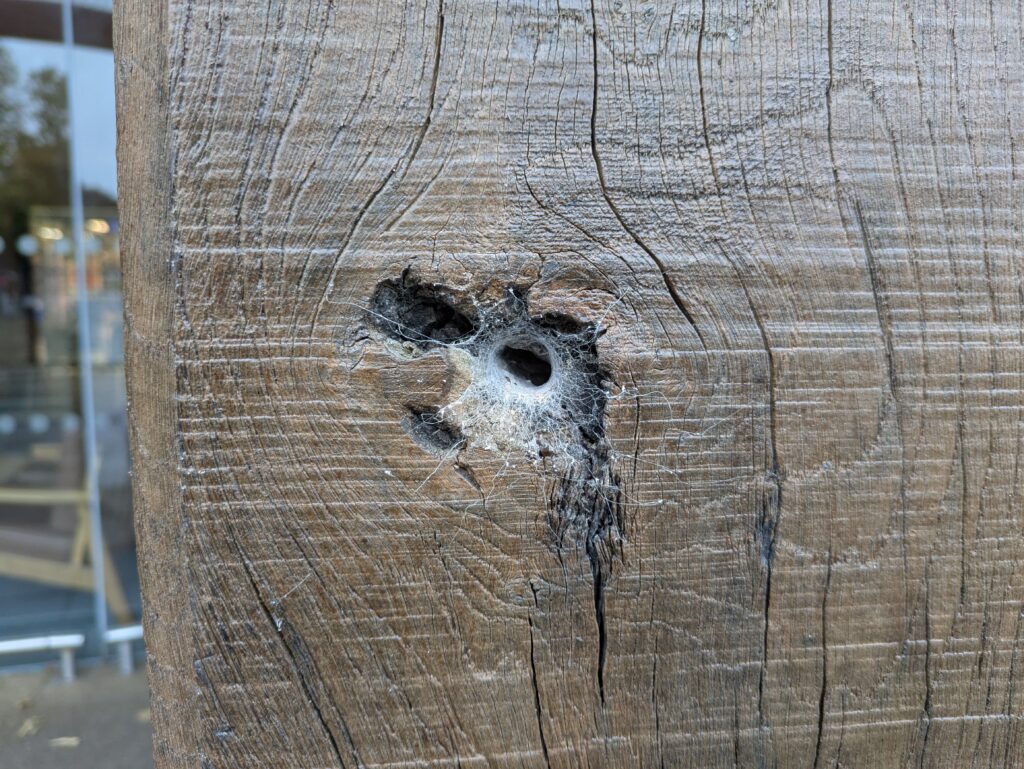
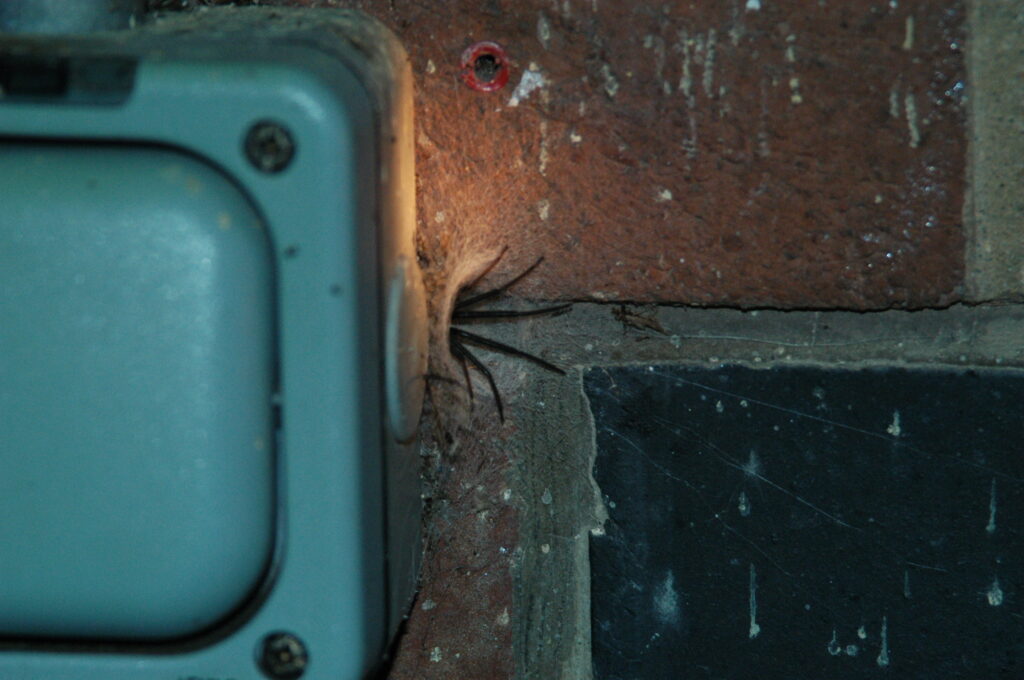
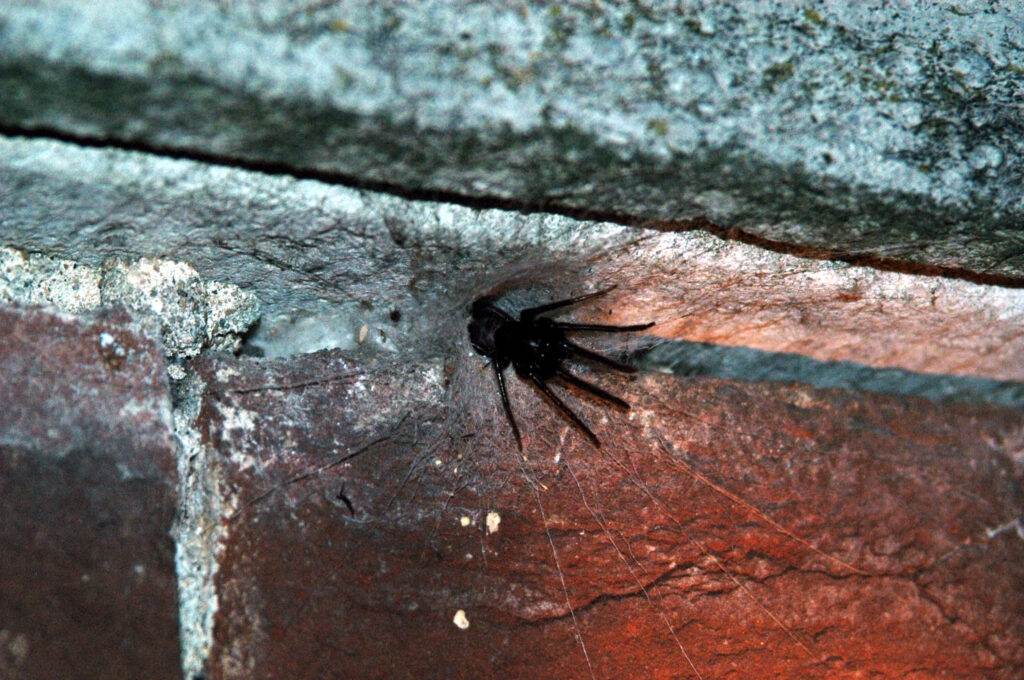
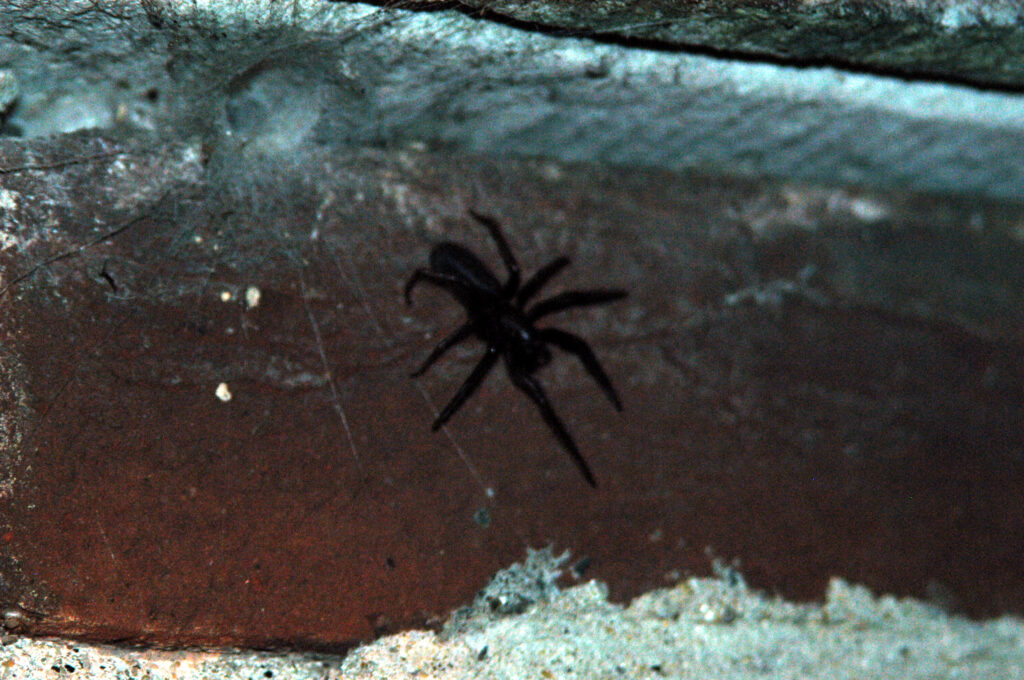
* Also called the ‘green-fanged tube spider’.
** The expansion of S. nobilis, hasn’t been without consequence and has likely affected some of our native fauna. Equally though, scaremongering news stories cause fear which is not a good foundation for encouraging people to show greater respect for wildlife.
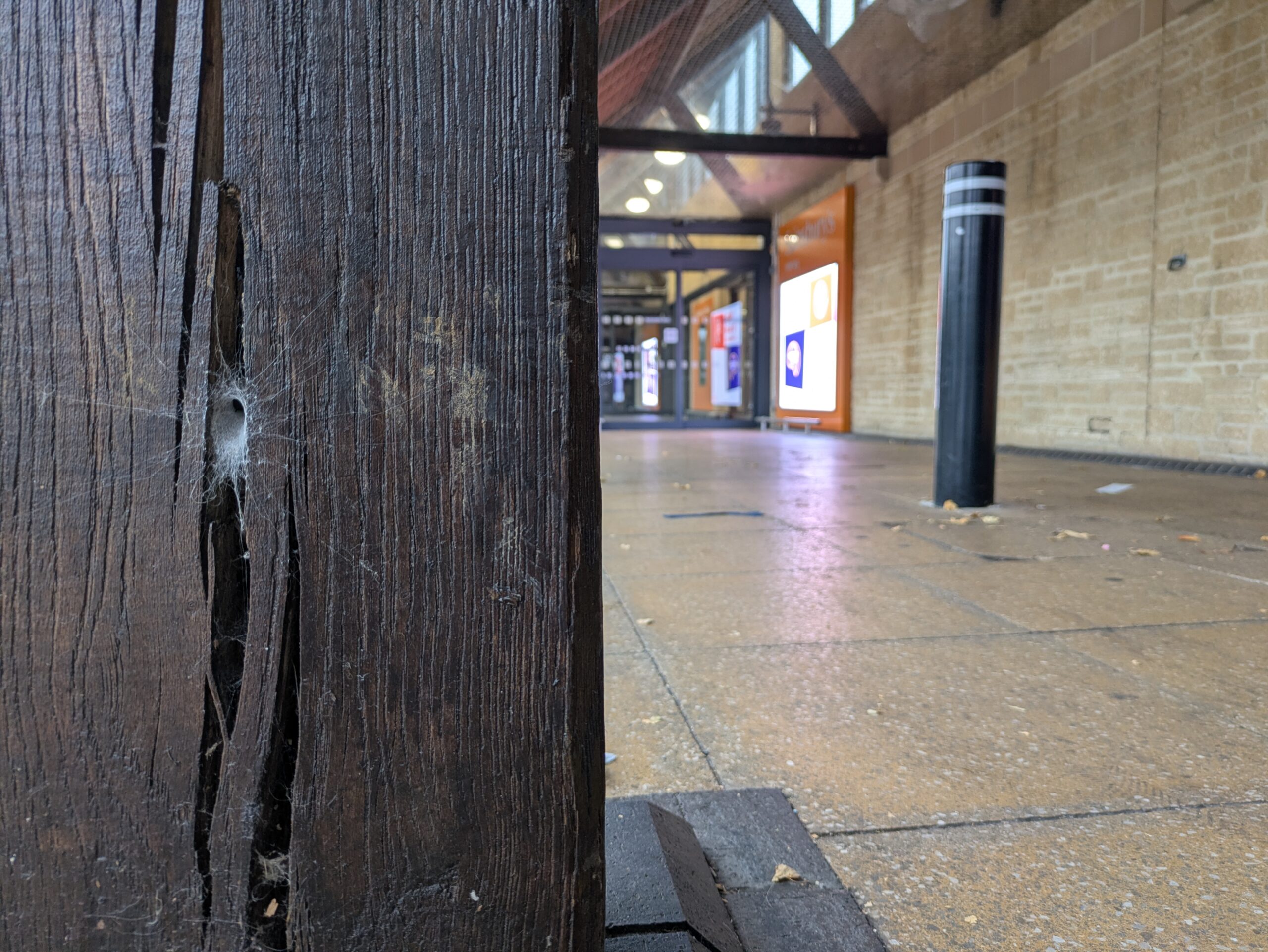
Leave a Reply